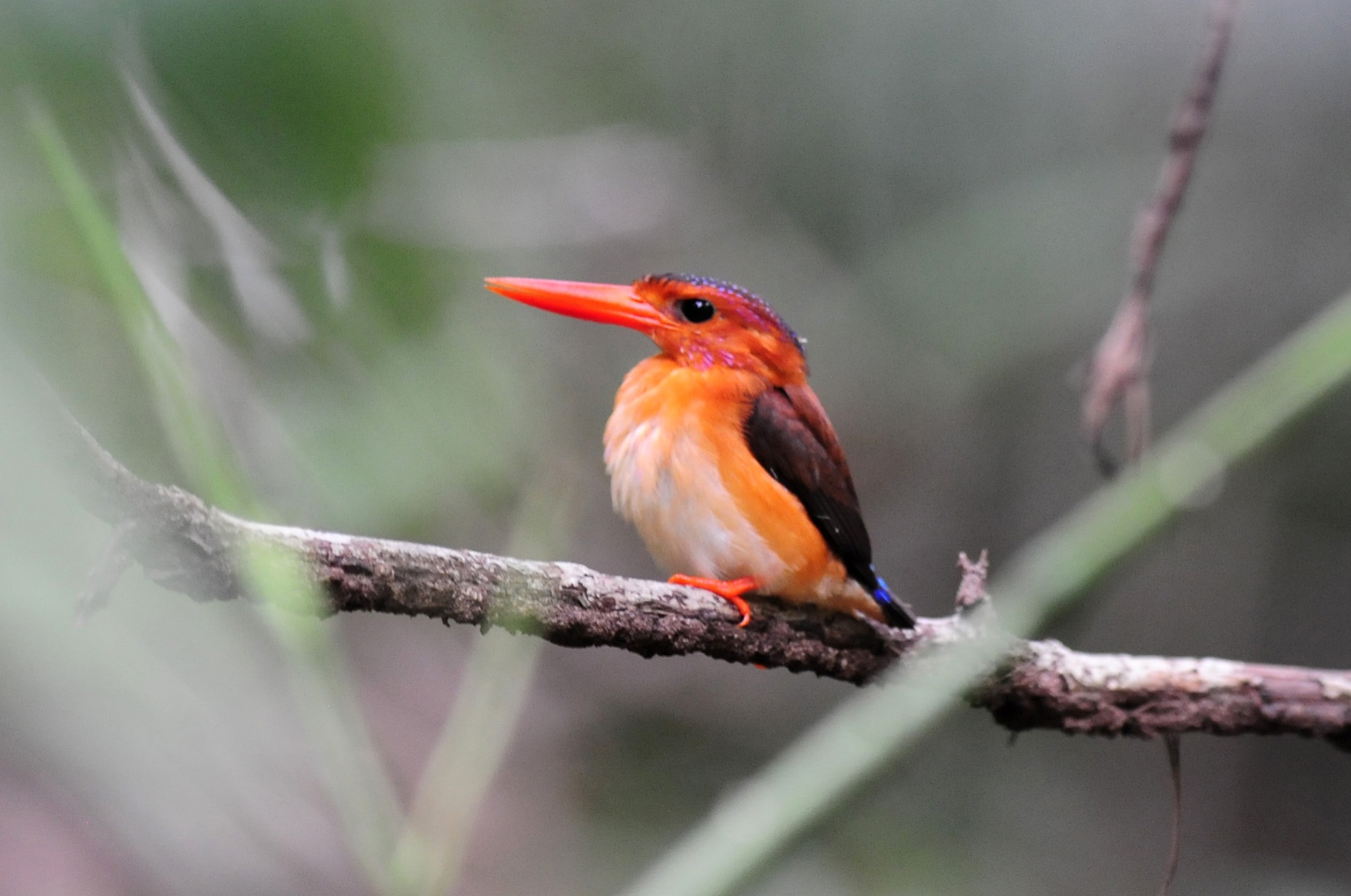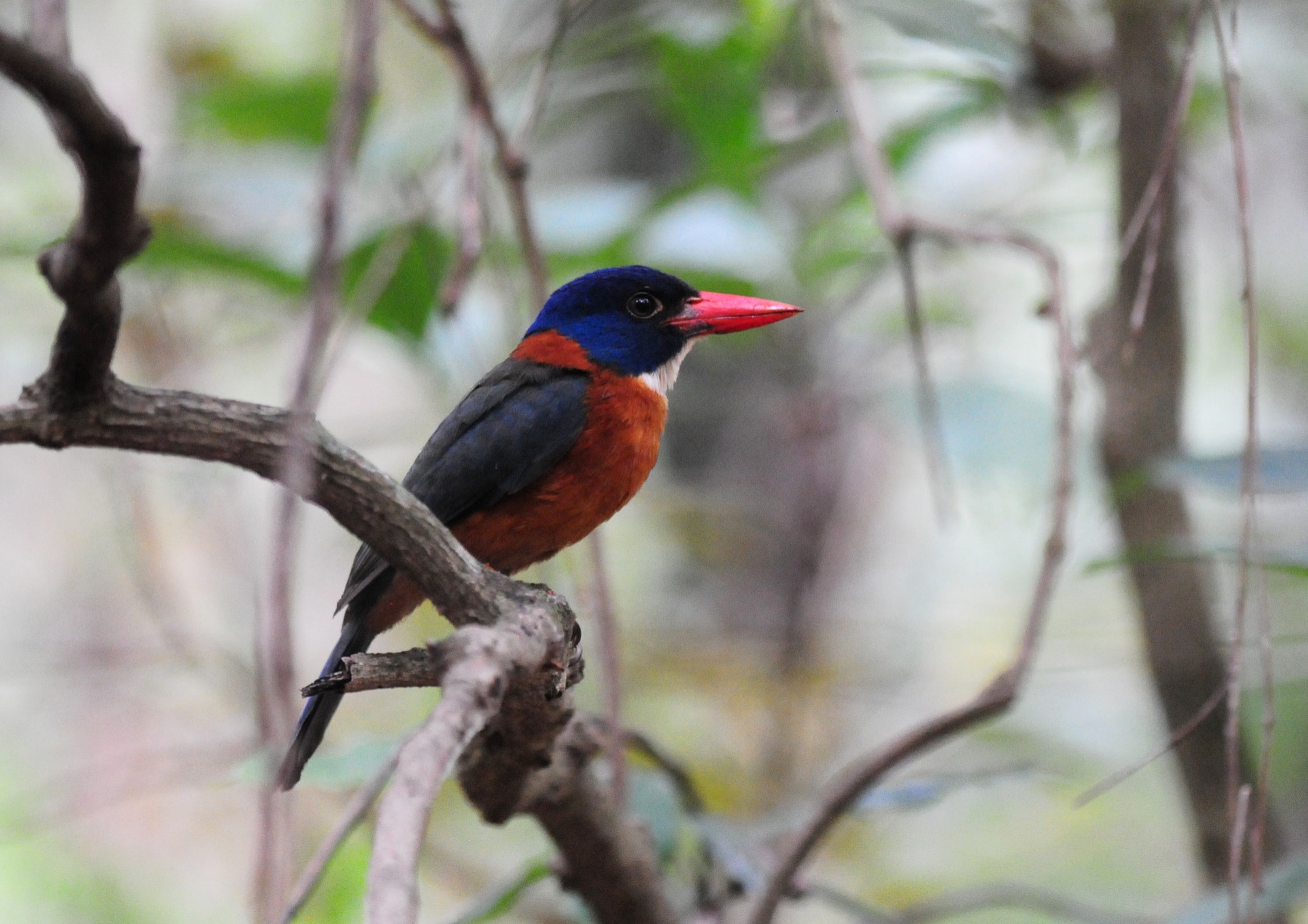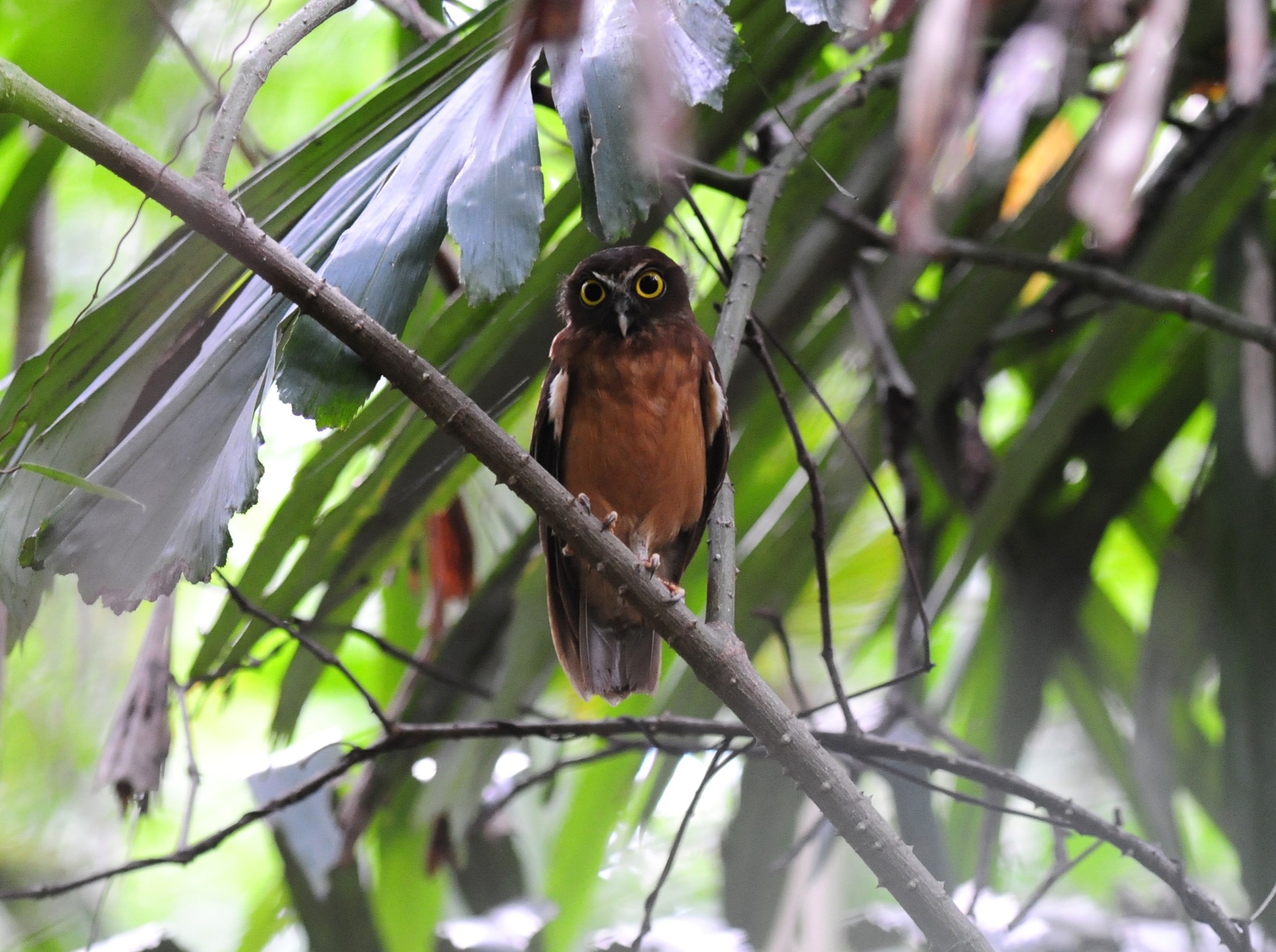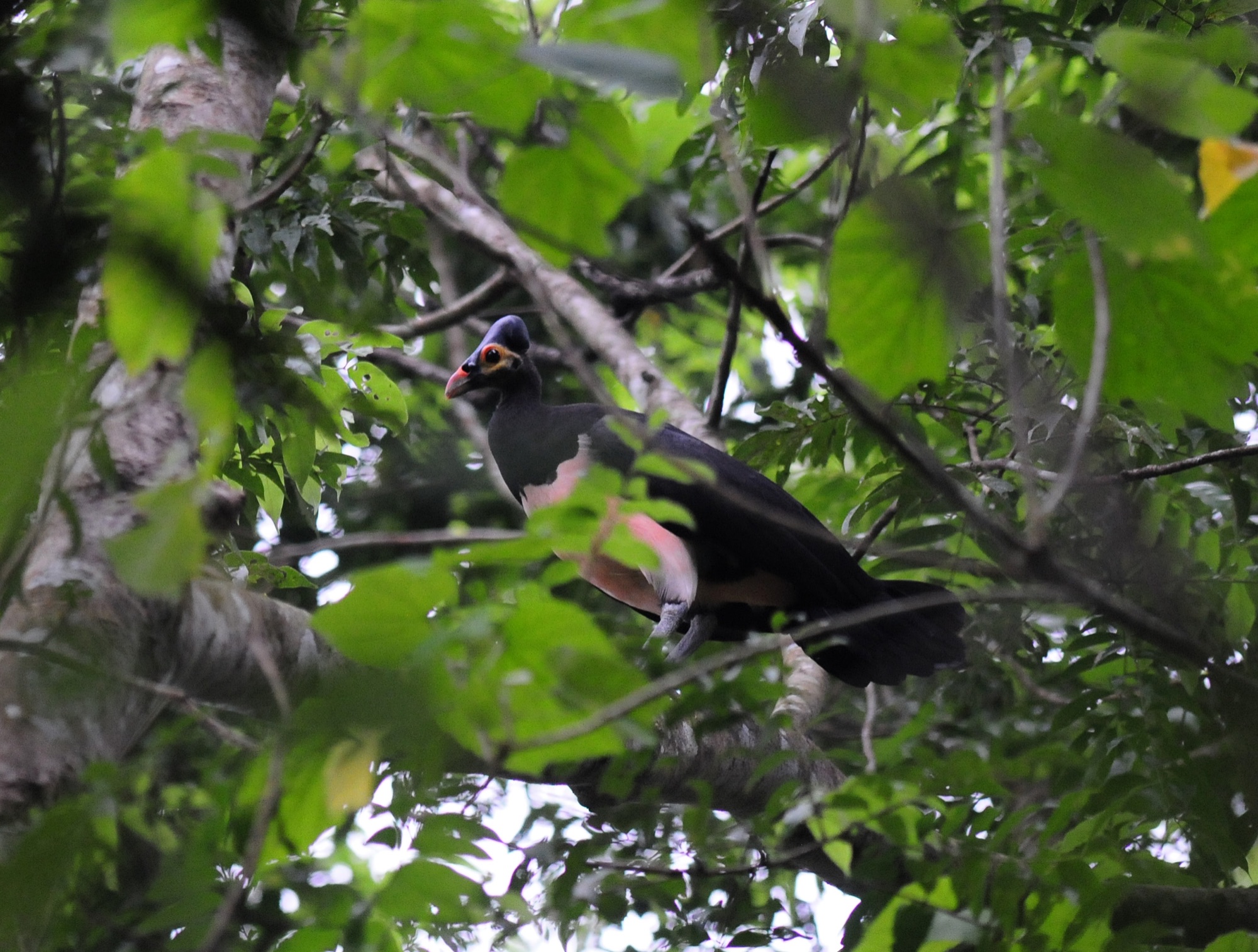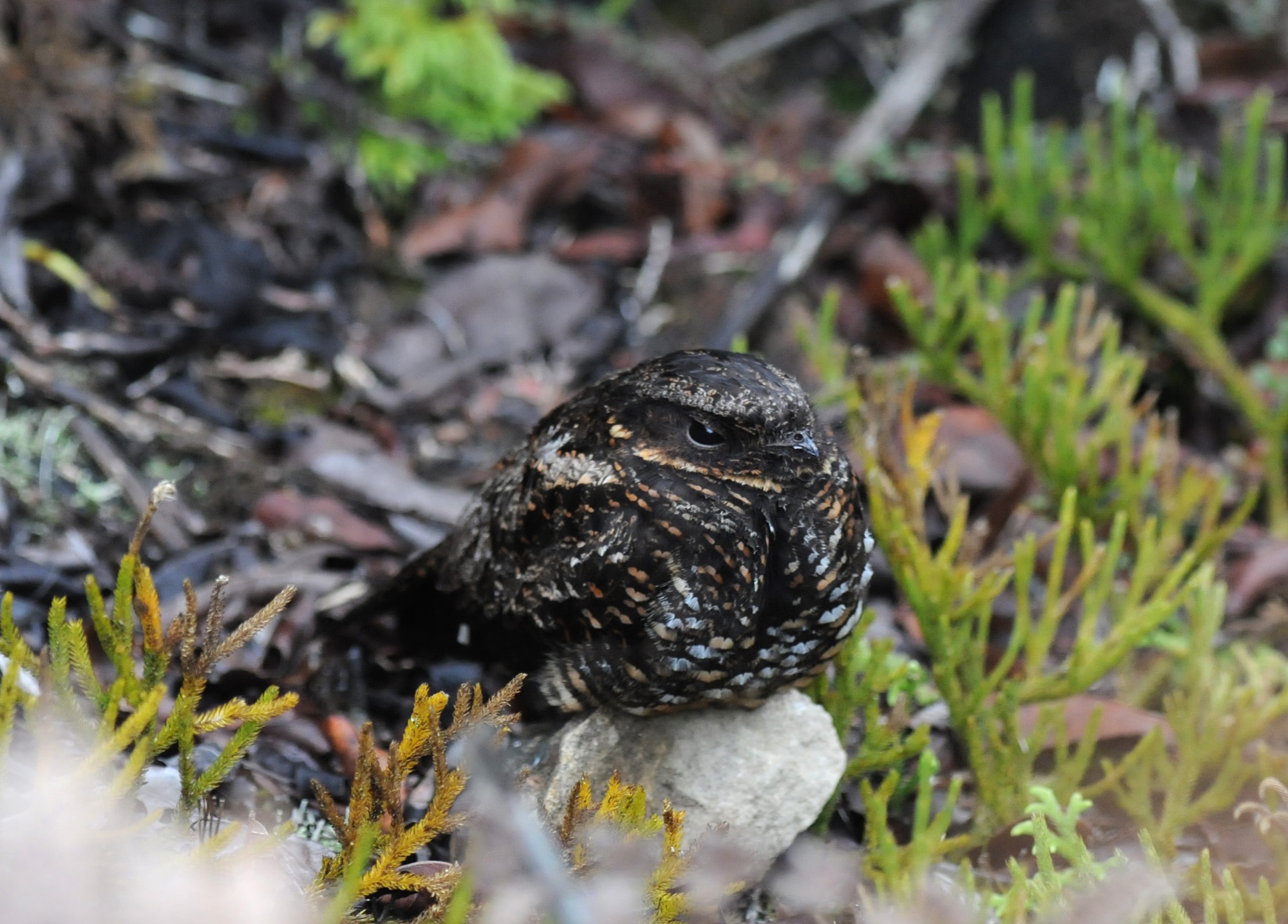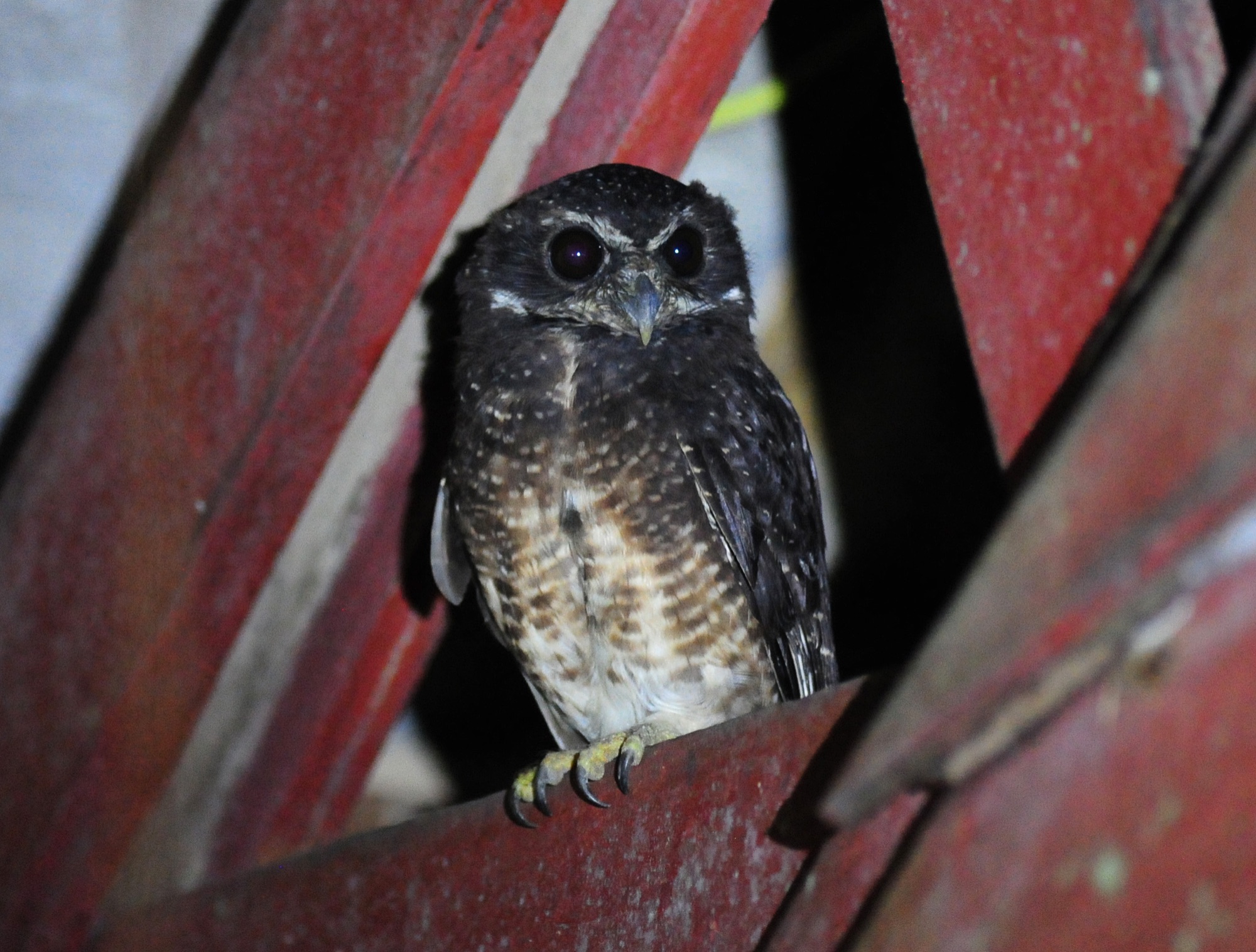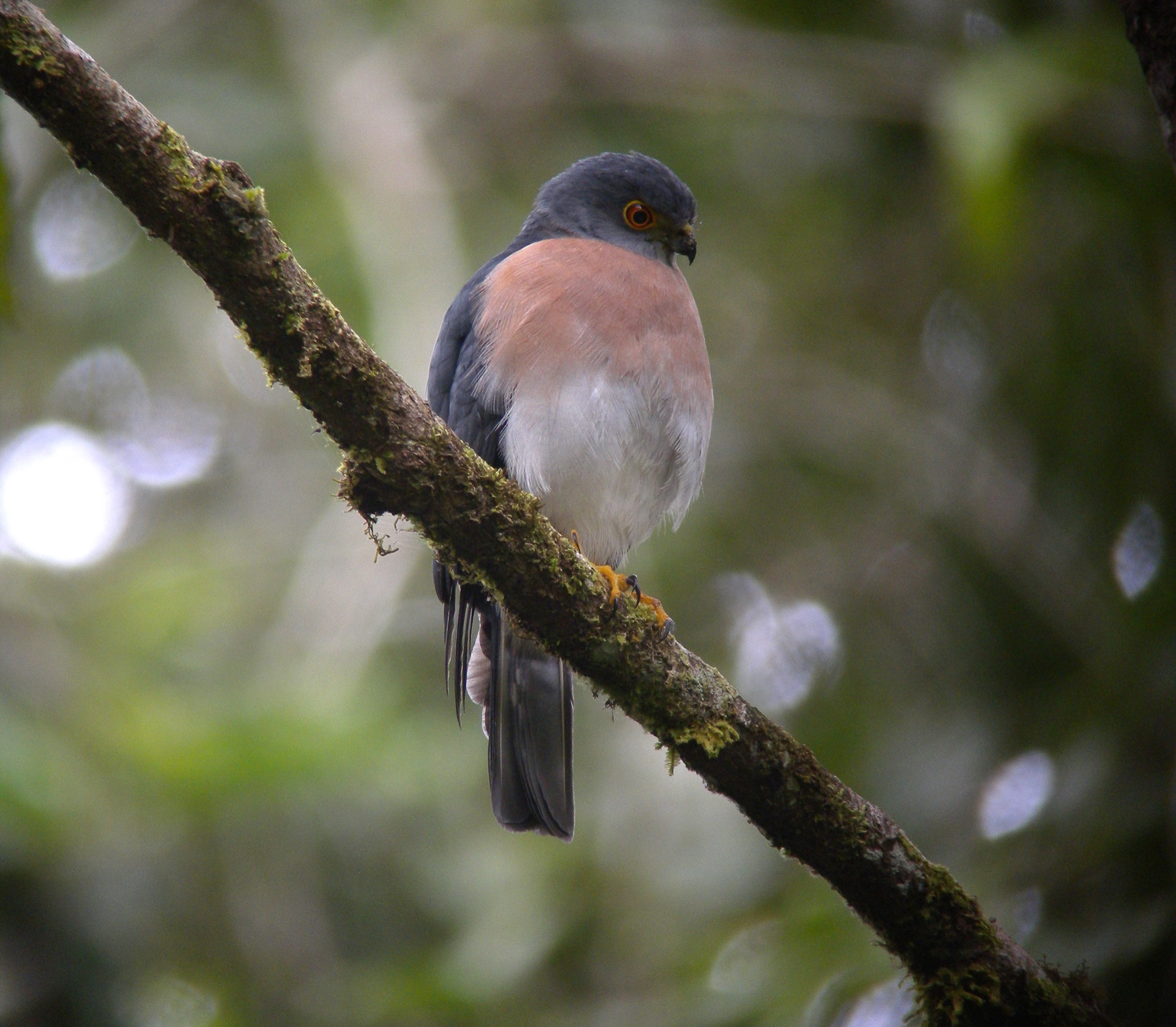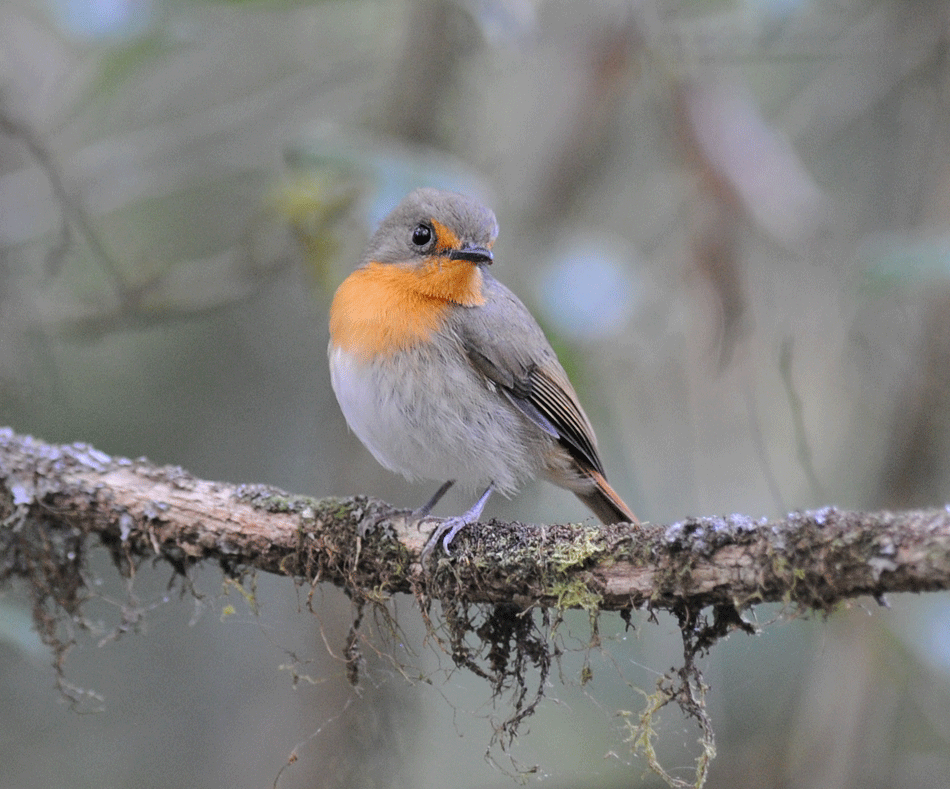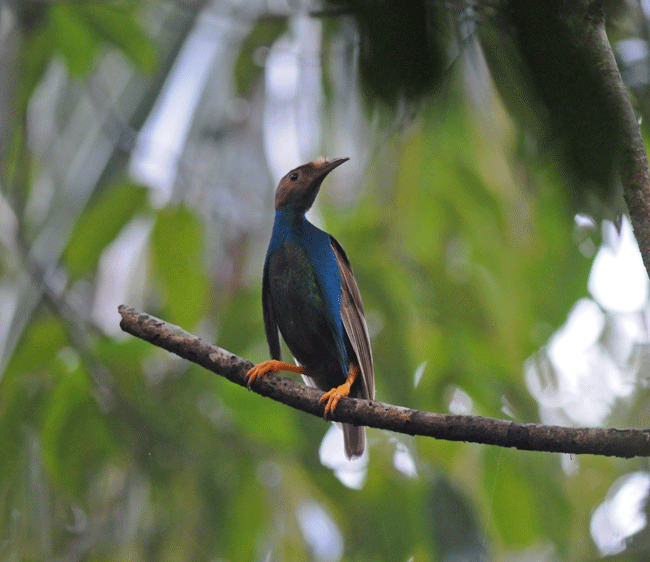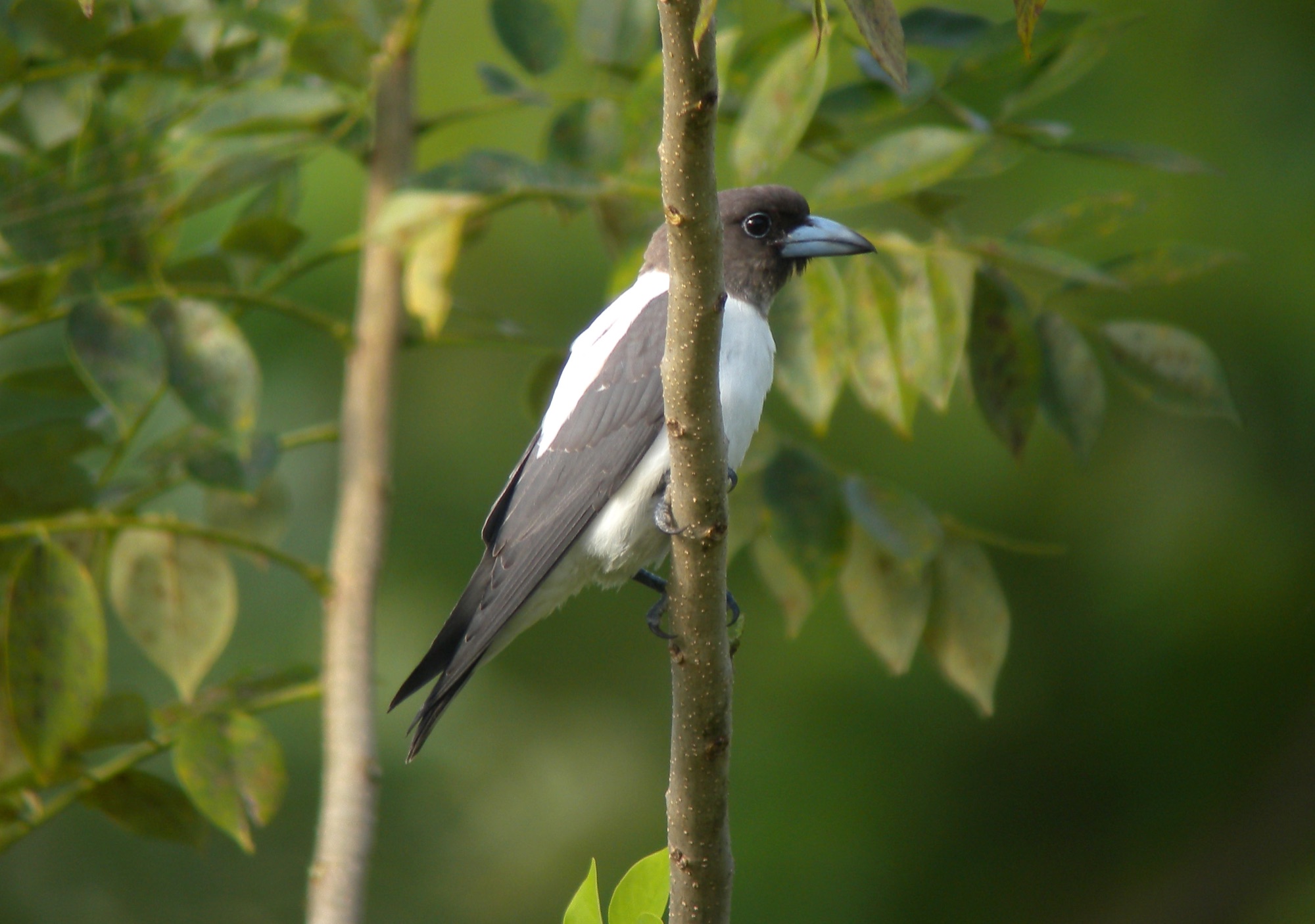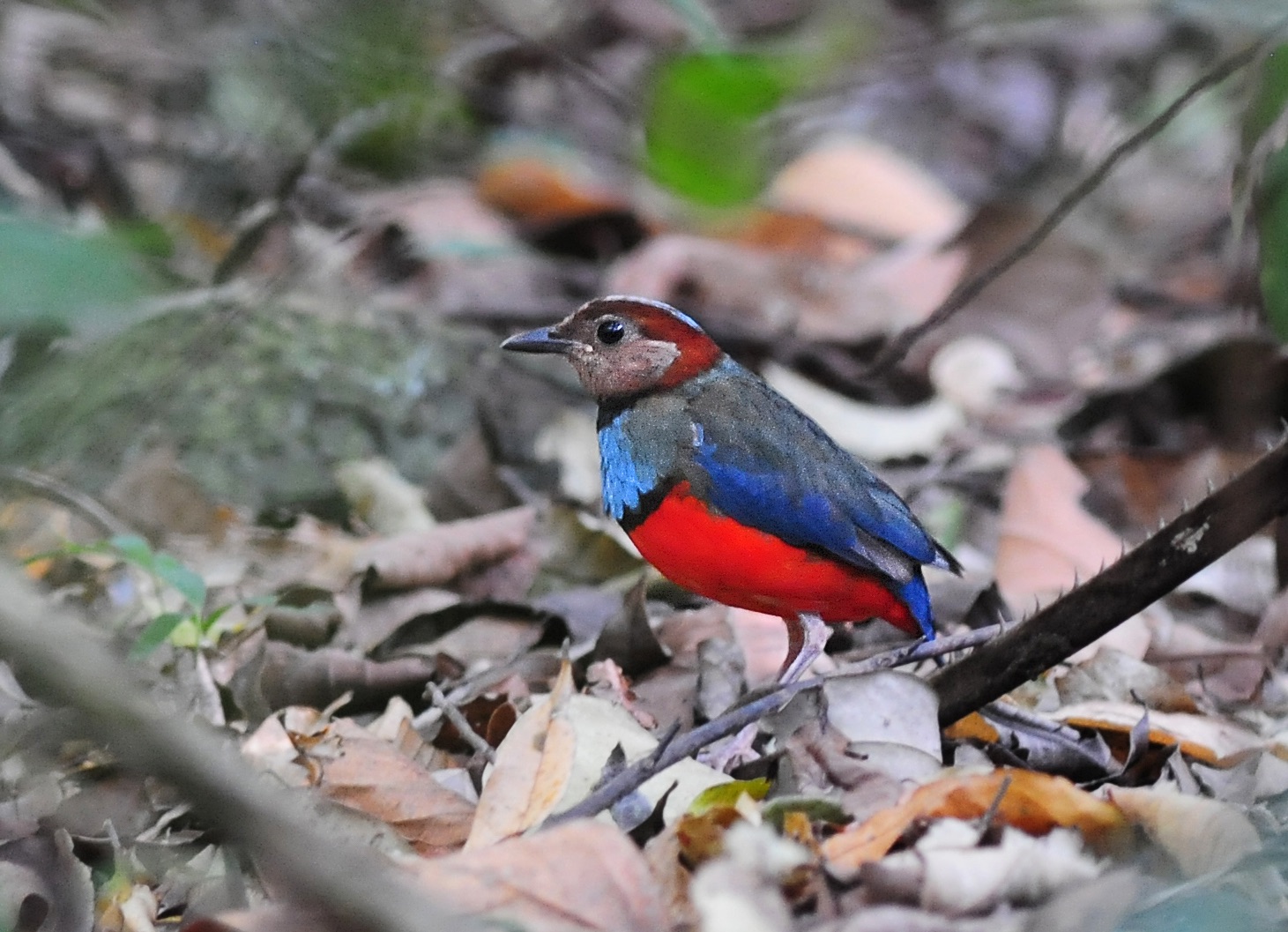SULAWESI & HALMAHERA
Day 1 Arrival in Makassar - 24th October
Following our arrival in Makassar in Sulawesi we will drive to Lompobattang where we will spend the night.
Day 2 Lompobattang
An early start will give us the best possible chance of finding the poorly known endemic Lompobattang Flycatcher, as well as the rare endemic Black-ringed Dark-eye and Lompobattang Leaf-Warbler. Birding the forest edge could also reveal Sulawesi and Ashy Woodpeckers, Rusty-breasted Cuckoo, Yellow-sided Flowerpecker, Pale-blue Monarch, Streak-headed Dark-eye, Sulphur-bellied Whistler, and sometimes even Piping Crow can be found here. After lunch we will return to Makassar and check some sites for White-vented Myna. Night near Makassar Airport.
Day 3 Karaenta Forest - Palu - Lore Lindu
We will spend the first couple of hours at Karaenta Forest looking for Black-headed Kingfisher a recent spit from Green-backed Kingfisher. Leaving here we can make a visit to an area of fish ponds and wet paddies that is productive for a number of wetland species including Sunda Teal, Javan Plover, White-headed Stilt, Terek Sandpiper, Long-toed and Red-necked Stints, Pacific Golden Plover, Australian Pratincole, and there is always the chance of finding a rarer wader or two. Later in the afternoon we will fly to Palu and then drive across the lowlands and up into the hills to Lore Lindu. Eventually we will arrive in the evening at Lore Lindu National Park where we will check in to our lodge for a 5 night stay.
Days 4 - 7 Lore Lindu National Park
Lore Lindu is not only the largest but undoubtedly the most productive of all the national parks in Sulawesi. There are a diverse range of habitats here from tranquil lowland rainforest to densely forested, rugged mountains up to 2509m, which makes this particular area so rich in birdlife, with a large number of Sulawesi's endemics present. We will concentrate on the upper reaches of the mountains to begin with, where the forest is mostly intact and where we will look for some localised endemics which usually associate in large, mixed flocks. The rather strange Malia is usualy quite conspicuous, along with Sulawesi Leaf-warbler, Caerulean and Pygmy Cuckooshrikes, Sulawesi Drongo and Piping Crow. We'll also search for Citrine and Blue-fronted Flycatchers, Island Verditer, Yellow-vented Whistler, Hylocitrea, Rusty-bellied Fantail, Crimson-crowned Flowerpecker, Mountain White-eye, Streak-headed Dark-eye and possibly Blue-faced Parrotfinch, all of which can be caught up in these roving flocks. We can also find Small Sparrowhawk in these higher areas, along with Yellow-and-Green and Ornate Lorikeets, Ivory-backed Woodswallow, Sulawesi Blue Flycatcher, Scarlet Honeyeater (sometimes treated as a distinct species, Sulawesi Myzomela), Fiery-browed Myna, and Mountain Serin. Patches of lowland forest hold a number of specialities such as Jerdon's Baza, Sulawesi Serpent-eagle, Sulawesi Cicadabird, Sulawesi Triller, Short-tailed Starling, Sulawesi Crested Myna and Lemon-bellied White-eye. On the lower slopes we will also search for Barred Honey-buzzard, the incredible Purple-bearded Bee-eater and Golden-mantled Racquet-tail. Flowering and fruiting trees are usually very productive and give us our best chance of seeing both Lesser and Greater Sulawesi Honeyeaters, as well as White-bellied and Grey-headed Imperial-pigeons, Superb and Red-eared Fruit-doves and Brown Cuckoo-dove. Of course we will also look for the secretive, skulking and hard-to-see species such as the shy Sulawesi Mountain Thrush, Great Shortwing and Chestnut-backed Bush-warbler. Other species possible during our stay include Cinnamon Bittern, Platen's Rail, Spot-tailed Goshawk, Spotted Kestrel, Sulawesi Ground-dove, Sulawesi Hawk-cuckoo, Rusty-breasted Cuckoo, Gould's Bronze-cuckoo, Purple Needletail, Moluccan Swiftlet, Sulawesi Pygmy Woodpecker, Knobbed Hornbill, Geomalia, Pygmy Cuckooshrike, Blue-fronted, Island and Rufous-throated Flycatchers, Sulawesi Blue-flycatcher, Mountain Tailorbird, Olive-backed, Black and Crimson Sunbirds, Greater Streaked Honeyeater, Maroon-backed Whistler, Asian Glossy Starling, and both Sulawesi and Fiery-browed Mynas. Night birding can be productive with some real quality species to find such as Sulawesi Scops-owl, Speckled and Cinnabar Boobooks, Sulawesi Masked Owl, and the poorly known Diabolical Nightjar. Nights at Lore Lindu.
Day 8 Lore Lindu - Palu - Taima
This morning we will have to say goodbye to fabulous Lore Lindu and head back down to the lowlands towards Palu. Along the way we can see endemics such as Leseur's Triller, Grey-sided Flowerpecker and Pale-headed Munia. Other typical lowland birds can be seen such as Lesser Coucal, Sooty-headed and perhaps Yellow-vented Bulbul, Golden-bellied Gerygone, Olive-backed Sunbird, Blue-tailed Bee-eater, and Black-faced Munia. We could also find a few Savanna Nightjars at their daytime roost, and if we are lucky then there is a chance of seeing Red-backed and Barred Buttonquails as well. Once we have seen everything we need here we will set out on the long drive to a new site for Maleo. Night at Taima.
Day 9 Taima – Tangkoko
Our main reason for coming to this new site is we will visit a very special place where Maleo comes down from the hill forest to lay their single eggs in the volcanic soil or to roost around their breeding grounds. They are much easier to see here than at the traditional stake-out of Tambun. Here we may also see Bay Coucal, Yellow-billed (Sulawesi) Malkoha, Purple-winged (Sulawesi) Roller, Sulawesi Hanging-Parrot, Sulawesi Babbler, Ivory-backed Woodswallow, Sulawesi Triller, White-rumped Cuckooshrike and White-necked Myna. Afterwards we will drive to Tangkoko for a 4 night stay. Night at Tangkoko.
Days 10 - 12 Tangkoko
This is a special place with much of the lowland forest remaining intact and we will explore the whole area on foot following a network of trails in search of a number of Sulawesi endemics and specialities. This is THE place to find a number of highly sought-after kingfishers, with Ruddy, Lilac-cheeked, Green-backed and Sulawesi Dwarf Kingfishers all possible. We will need to take a local palmboat into the mangroves to have any chance of the huge Black-billed Kingfisher, and there is also the added bonus of a day-roosting Sulawesi Masked Owl as well. Amongst a large list of very special birds we will search for Isabelline Bush-hen, Sulawesi Hawk-eagle, Sulawesi Black Pigeon, Maroon-chinned and Black-naped Fruit-doves, Grey-cheeked Green-pigeon, White and Silver-tipped Imperial-pigeons, White-faced Cuckoo-dove, Yellow-crested Cockatoo, Yellow-breasted and Golden-mantled Racquet-tails, Ornate Lorikeet, Blue-backed Parrot, Large Sulawesi Hanging-parrot, Black-billed Koel, Bay Coucal, Yellow-billed Malkoha, Purple-winged (Sulawesi) Roller, Sulawesi Dwarf and Knobbed Hornbills, Ashy Woodpecker, Elegant Pitta, White-rumped Cuckooshrike, Red-backed Thrush, Pale-blue Monarch, Sulawesi Babbler, Grosbeak Starling, and White-necked Myna. This bird-rich area is also home to a huge variety of more widespread species such as Great-billed Heron, Pacific Reef-egret, Osprey, Brahminy Kite, White-bellied Sea-eagle, Sulawesi Goshawk, Vinous-breasted Sparrowhawk, Tabon Scrubfowl, Black-naped Tern, Azure-rumped Parrot, Pygmy Hanging-parrot, Lesser Coucal, Stephan's Dove, Glossy and Uniform Swiftlets, Grey-rumped Treeswifts, Red-bellied and Hooded Pittas, White-breasted Woodswallow, Pied Cuckooshrike, Cicadabird, Sooty-headed Bulbul, Black-naped Oriole, Plain-throated Sunbird, Hair-crested Drongo, Slender-billed Crow, and both White-necked and Finch-billed Mynas. Once the sun has set we will have the opportunity to search for Sulawesi Nightjar, Ochre-bellied Boobook and Sulawesi Scops-owl. Nights at Tangkoko.
Days 13 - 14 Tangkoko - Kotamobagu
After breakfast and a last chance to find any species we still need, we will drive to Kotamobagu for a two night stay, which gives us easy access to the montane forest of Gunung Ambang National Park in search of some of Sulawesi's least known and rarest species. Our primary target is the localised Matinan Flycatcher, which only inhabits the Minahasa Peninsular here in northeast Sulawesi. If we are lucky, then we may have an encounter with the elusive Scaly Kingfisher, Cinnabar Hawk-owl or the seldom-seen Sombre Pigeon, as well as Red-eared and Superb Fruit-Doves and Purple Needletail. Other possibilities here include Grey-cheeked Pigeon, White-bellied Imperial-pigeon, Yellow-and-green Lorikeet, Purple-bearded Bee-eater, Sulawesi Grasshopper Warbler (formerly called Chestnut-backed Bush-warbler), Citrine Canary-flycatcher, Sulawesi Babbler, Crimson-crowned Flowerpecker, Rusty-flanked Fantail and others. At night we will make a special effort to find Cinnabar Hawk-owl. We will also have an early start to reach the core area of Dumoga Bone National Park. The habitat here is primarily lowland rainforest but is surrounded by mountains with some good montane forest cloaking the lower slopes. Amongst a good selection of species we will look for Rufous Night-heron, Wandering Whistling-duck, Sunda Teal, Comb-crested Jacana, Lesser Fish-eagle, Spotted Harrier, Buff-banded and Barred Rails, White-browed Crake, Yellow-breasted Racquet-tail, White-faced Cuckoo-dove, Sulawesi Ground-dove, Oberholser's Fruit-dove, both Large and Small Sulawesi Hanging-parrots, Minahassa Racquet-tail, Sulawesi Triller, Green-backed Kingfisher, Pied Cuckooshrike, White-backed Woodswallow and Black-faced Munia amongst others. This is also our last chanceof catching up with Sulawesi Scops-owl and Speckled Boobook as well.
Day 15 Gunung Ambang - Gunung Mahawu - Manado
We have another early morning in order to catch up with any species still missing from our list, possibly returning to Gunung Ambun or birding Gunung Mahawu in the Minahasa highlands for potentially a better shot at Scaly Kingfisher, as well as furthe chances of any highland species we have not yet seen. Night at Manado.
Days 16 - 19 Manado - Ternate - Halmahera
We will take a flight to the small island of Ternate, which is located just off the west coast of Halmahera. Dominated by a smoking volcano which rises to 1700m, we will jump aboard a speedboat to take us across the bay to Sidangoli in the north of Halmahera. During the short crossing we need to keep our eyes open for a few seabirds which could include Lesser Frigatebird, Brown Booby, Great Crested and Bridled Terns, and sometimes even Bulwer's Petrel. Halmahera is the largest of the famous ‘Spice Islands' and its position far to the east of the Wallace Line means there is a rather Australasian influence to the avifauna.
As in many areas of south-east Asia the habitat is becomingly increasingly degraded, yet there are still some very good patches of forest that are teeming with birdlife. Very early on our first morning we will visit the display area of Wallace's Standardwing, an extraordinary bird of paradise and not only is this endemic but is exceedingly rare and only found in a few special forests. We will need to be in position before sunrise to witness the spectacular courtship display where several males call loudly, sticking out their brilliant white standards in the hope of attracting a female. We will also target the stunning Ivory-breasted Pitta, the bizarre Moluccan Owlet-nightjar, and our second bird of paradise, Paradise Crow. At present there is a very good stake-out for Invisible Rail and we will keep our fingers crossed that this situation reamains the same until our arrival! Other key species include Azure Dollarbird and Halmahera Pitta. The rest of our time here will be spent in search of Pacific Baza, Moluccan Goshawk, Variable Goshawk, Gurney's Eagle, Dusky Scrubfowl, Nicobar Pigeon, Blue-capped and Grey-headed Fruit-Doves, Cinnamon-bellied Imperial-pigeon, White Cockatoo, Chattering Lory, Red-flanked Lorikeet, Red-cheeked, Great-billed and Eclectus Parrots, Moluccan Hanging-parrot, Goliath Coucal, Moluccan Scops-owl, Moluccan Boobook, Halmahera Swiftlet, Moustached Treeswift, Blue-and-White, Sombre and Beach Kingfishers, Common Paradise-Kingfisher, Rainbow Bee-eater, Purple Roller, Blyth's Hornbill, Moluccan Cuckoo-shrike, Rufous-bellied Triller, Golden Bulbul, Slaty and Moluccan Monarchs, Shining Flycatcher, Golden and Drab Whistlers, Flame-breasted Flowerpecker, Cream-throated White-eye, White-streaked and Dusky Friarbirds, Halmahera Oriole, and Metallic and Moluccan Starlings amongst others. Nights at Wasile.
Day 20 Wasile - Tobelo
After spending a few hours chasing any species we may still need, we will head north to Tobelo. This is a very interesting drive and we usually pick up a number of new species along the way, such as Pacific Baza, Pied Imperial-pigeon, Goliath Coucal, Moustached Treeswift and White-bellied Cuckooshrike amongst others. After checking in to our hotel we will visit a nearby beach for our target species, the rare Moluccan Scrubfowl. These globally-threatened and shy birds come to the beach at night to lay their eggs but numbers vary and a certain amount of luck is needed to spotlight one! Night at Tobelo.
Day 21 Tobelo - Ternate - End of tour - 13th Nov
We have the morning to catch up with any species still needed on Halmahera before flying back to Ternate Airport on Sulawesi and the conclusion of a wonderful, endemic-laden tour.
All photos copyright Nick Bray/Zoothera Birding
1st row - Sulawesi Dwarf Kingfisher, Green-backed Kingfisher, Ochre-bellied Boobok
2nd row - Maleo, Diabolical Nightjar, Speckled Boobook
3rd row - Small Sparrowhawk, Sulawesi Crested Myna, Lompobattang Flycatcher
4th row - Wallace's Standardwing, Ivory-backed Woodswallow, Sulawesi Pitta

